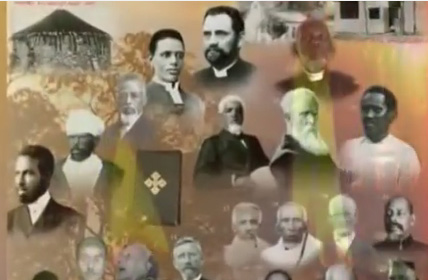
Compiled and researched by Resoum Kidane

After Johannes Gutenberg combined mechanical moveable type, a new oil-based ink and a wooden hand press to create the printing press in the mid-fifteenth century, this new technology spread rapidly across Europe and later introduced in Eritrea by the Catholic Mission in Massawa, 1863, and the Geez inscription started to appear in modern printed literature in the late 19th century.
After printing presses were introduced in Eritrea, by the Catholic Mission in Massawa, the Lazarist Missionary Lorenzo Bianceri published Catechism in Amharic in the Eritrea port city of Massawa in 1864. As a continuation of this development in 1885/1886 the Swedish Evangelical Mission set up a printing press in Menkula in Eritrea to print religious books, but later the print press which was owned by the Swedish Evangelical Mission transferred to Massawa 1895
Negash adds that 1896 the press published Dr. K. Winqwist’s “printed version” of the Tigrinya alphabet, which was a major event in the history of the language, as it opened the way for continued publications. It was also this same press that started publishing the first Tigrinya newspaper, MelEkhti Selam (the Message of Peace) in 1909.
Apart from the Catholic Mission and Swedish Evangelical Mission set up a prniting press, the Italian also established a secular printing press at Massawa this was when they transferred their base to Massawa from Assab. From 1885–1897, Massawa served as the capital of the region, before Governor Ferdinando Martini moved his administration to Asmara [weki]
Gabra-Egziabher Gila Maryam was one of those a schola from the first generation who started the first Tigrinya newspaper " ሓደ ጋዜጣ ኣስመራ" in 1888 and 1889. The newspaper was written by hand as there was no printing press. source
1891 the Italian began to publish propoganda material in Eritrea and El Eritereo, the Italian newspaper was launched in Eritreain 1891. During this period other publication about Tigrinya and Tigre language and culture were published in Europe. To mention a few of them: in 1891 Manuel de langue Tigrai was published by J. Schreiber in Vienna, 1894, An Italian-Tigrait Dictionary prepared 1894, 1895 Grammatica elementare della lingua tigrigna was published by De Vito, L in Rome, this publication also available from SOAS, London; Hagos Tekeste compiled a 195 page in 1903 Tigrinya-Italian-Arabic dictionary . This dictionary has about 4,140 ; 1904 Vocabolario italiano-tigrai was also published by Alfonso Cimino in Asmara Tipografia Della Mission Svendese . in 1915 Dictionnaire de la langue tigraï was published by Coulbeaux, P. S; Schreiber, J. (Jules) in Vienna : In Kommission bei A. Hölder.
.Giyorgis who was a scholar and
taught Tigrinya in
Hagos Tekeste also compiled a 195 page Tigrinya-Italian-Arabic dictionary in 1903. This dictionary has about 4,140 Tigrinya entries with Arabic and Italian equivalents.
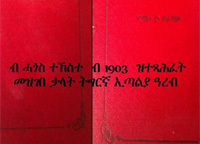
European missionaries had also greatly contributed to the flourishing of Tigrinya and Tigri publications from the 1890s onwards which included the first Tigrinya language newspaper in 1909 [3]. Other publications from the mid-1800s were mostly religious books and dictionaries.
In 1912 the printing press of the Catholic Mission was moved to Asmara, which was the first printing press in East Africa. Today, this press still functions in Asmara under the name “Francescana Printing Press(”Professor Ghirmai Negash)
During the Aksumites period with the advent of Christianity many religious work were translated from Greek, Syriac, Coptic, and later also Arabic and written in manuscript. For example, the bible was translated from Greek into Ge’ez. Throughout this period other religious works :Apocrypha (ቅዱሳት መጻሓፍቲ), Doctrines of monasteries (ስርዓተ ገዳምን ሕጊ ምንኩስናን), Liturgy (ጸሎተ ቕዳሴ), Litanies (ዜማ), Religious fictions (ሃይማኖታዊ ልብወለድ) were translated from Greek and Aramaic (sorya) languages into Geez until the 6th century AD. The Ordeal of Apostles (ገድለ ሃዋርያ) hagiographies (ገድላተ ቅዱሳን) The Eulogy of St Mary (ውዳሴ ማርያም) etc. were also translated before 12 century. During British Military Adminstration, a number of Ge’ez parchments were taken to England to be found now in the British museum [source Sirak Kbrom ]
In mid of the 19th century mostly religious books of Evangelicals were published by the Lazarist Missionary and SEM. For example The four Gospels of our Lord and Saviour Jesus Christ translated into Tigre-language by Abyssinian debtera Mattoes and revised by the deceased Rev.Mr Isenberg (1806-1864), which was published in Basle, Switzerland at the Mission-Press , 1866 on St. Chrishona at the request and expense of the British and Foreign Bible-Sociery, 1866)". The book is available in libraries at the School of Oriental and African Studies in London and online."The four Gospels of our Lord and Saviour Jesus Christ, in the Tigrinja language. (Asmara, Printed at the expense and by the request of the British and foreign Bible society, at the Swedish mission-press, 1900. The Tigrinya title is ወንጌል ቅዱስ ናይ ጎይታና ናይ ምድሓኒት ናይ የሱስ ክርስቶስ.This work is of major significance, because it marks the first appearance of the Tigrinyalanguage in book form as well as in a full Geez script (source Abraham Negash)
The first Eritrean educators generation who contributed in the translation of Bible into Tigrinya and Tigre
In 1889 Dawit Amanuel had also translated the New Testament and it was resolved that he, Tewolde-Medhin, Roden and Winqvist would review the work, paying attention to the Greek origin as well as to the Ge’ez and English version [Lundström, 2011, page 226] . Andemariam (2012) also states that Dawit, the man who can rightfully take the credit for pioneering Tegre literature, then produced a grammar book and a dictionary of 8000 words. He also collected a great number of heroic ballads, dirges, epigrams, songs, stories, fables, proverbs and laws of the Tegre.
ቀሺ ገብረታትዮስ ን ቀሺ ማርቆስን ግርማይ(1959-1924)

ንስነ-ጽሑፍ ብዝምልከት፣ ፍረ ጻዕሪ ቀሺ ማርቆስን ቀሺ ገብረታትዮስን እዚ ዝስዕብ ነበረ፥
•- ብ1897 እተሓትመ መምሃሪ ቛንቋ ትግርኛ፣
•- ብ1899 እተሓትመ ብሕቶን መልስን ኣቢሉ ንተመሃራይ ወንጌል ዜሰልጥን ጽሑፍ (catechism)፣
•- ብሚያዝያ 1900 እተዳለወ ቀዳማይ ሕታም ናይቲ "የሰላም መልእክት" ዝስሙ መጽሄት (ድሓር "መልእኽቲ ሰላም" እተሰምየ)፣
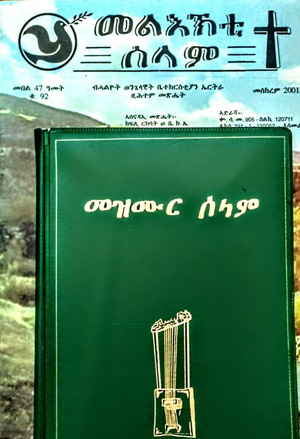
•- ብታሕሳስ 1900 እተሓትመ ናይ ትግርኛ መጽሓፍ መዝሙር። read more
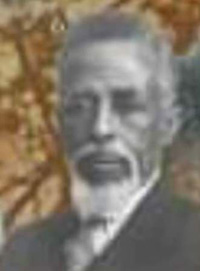
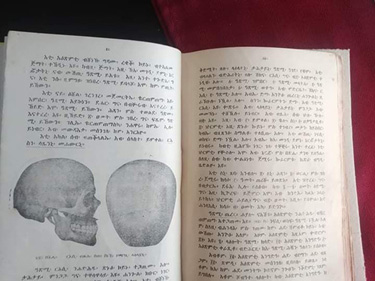 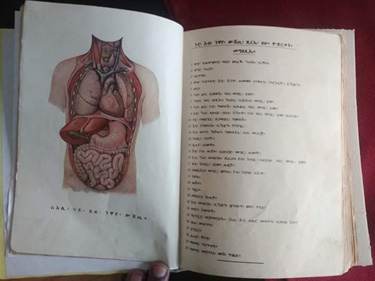 |
|
| 1928 ኣቦና ቀሺ ግርማጼን ገብረ ብዛዕባ ኣካላት ደቂ ሰባት እትገልጽ ልዕሊ 300 ገጽ ዘለዋ መጽሓፍ "መዋልዳን" ዘርእስታ መጽሓፍ ብቋንቋ ትግርኛ ኣዳልዮምን ኣሕቲሞምን። ቅድሚ 92 ዓመት ኣብ'ቲምዕባለተክኖሎጅንኣብዘይነበረሉእዋንኣባሓጎታትናኤርትራዊያንከምዚዝዓይነቱጉሩምዕዮንህዝቦምንሃገሮምንየበርክቱብምምባሮም፤እዚዘረድኣናህዝቢኤርትራኣብቲዓለምከምዚሎሚከይማዕበለትከላክሳብክንደይምዕቡልንምሁርንውፉይንበሊሒንህዝቢ |
|
Tewolde-Medhin translated much of the Bible and assisted. J. Kolmodin in compiling an important collection of Eritrea folktales and oral history. [Connell, 2010, page 509] Tewolde-Medhin spoke 12 languages: Tigryna, Tigre, Geez, Arab, English, Italian, German, Swedish, Greek, Latin, Amharic and [old Hebrew]
Between 1900 and 1915
Mr Bairu Uqbit [father of Tedla Bairu] also translated of John Bunyan's " Piligrms Progress" in 1926, the early New Testament in collaborarion with Embet Eksie, in 1934, and several song in the Tigrinya Book of Hymns. Bairu also translated a book on Christianity in 1935.
Qeshi Zeratsion Mussie and Qeshi Solomon Atsqu
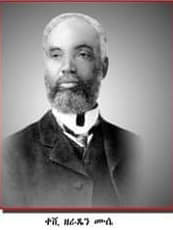
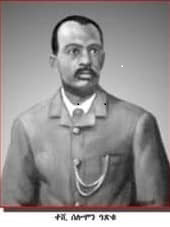
In 1916 Qeshi Zeratsion Mussie and Qeshi Solomon Atsqu had written one of the earliest Tigrinya books entitled, Berhan Yikhun (Let there be Light), which is an autobiographical account of their reform movement.
“The Evangelical Lutheran Church of Eritrea is unique because it was initiated by a group of Orthodox priests in the 1860's who felt that teaching Christianity in the archaic Ge’ez language that people did not understand did not make sense. Their argument was to teach the Bible to people in the Tigrinya language that they understood. They saw themselves as Orthodox priests, but also as reformers. The reform movement was a completely local phenomenon. The achievements of the priests were twofold. First and foremost, to start a reform movement that would give people access to the scriptures in the language they understood, and, secondly, to make Tigrinya a written/literary language.Source from facebook "Childhood ChurchMY CHILDHOOD SCHOOL"
ምትርጓም መጽሓፍ ቅዱስ ትግርኛ

ስሳን ሹዱሽተን ዓመታት ንሓንቲ መጽሓፍ (ሓጺር ዛንታ ምትርጓም መጽሓፍ ቅዱስ ናብ ቋንቋ ትግርኛ
Mrs. Elsie Winqvist Mr. Karl Winqvist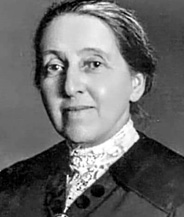
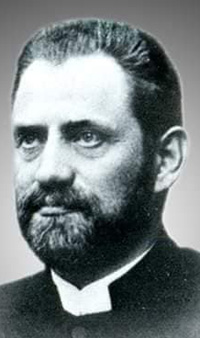
ወይዘሮ ኤልሲ ዊንክቪስት ኣብ ምትርጓም መጽሓፍ ቅዱስ ትግርኛ
ወይዘሮ ኤልሲ ዊንክቪስት (Mrs. Elsie Winqvist) (1863–1957) ምስ በዓል ቤታ ዶክተር ካርል ዊንክቪስት (Mr. Karl Winqvist) (1847–1909): ኣብ 19 ክፍለ ዘመን ኣብ 1883 ዓ.ም. ንኣገልግሎት ወንጌል ናብ ኤርትራ ተላእኩ። ወ/ሮ ኤልሲ ጀርመናዊት ናይ ቋንቋ ክኢላ ነበረት፣ ዶክተር ካርል፡ ድማ ካህንን ሓኪምን መበቆሉ ከኣ ሽወደናዊ ነበረ፣። ኣብ እምኩሉ ቃል ወንጌል ብምምሃርን ምጽንናዕን (counselling) ብዓይነታ ናይ መጀመርታ ዝኮነት ክሊኒክ ከፊቶም ናይ ሕክምና ረዲኤት ንህዝቢ ብምሃብን ዕዮኦም ጀመሩ። ንኹሉ ሰብ ብመንፈስን ነፍስን ስጋን ምሉእ ምጥዓይ ኣብ ምሃብ ዓየዩ።
ኣብቲ ግዜቲ መጽሓፍ ቅዱስ ናብ ትግረንን ኩናማን ምትርጓም ተጀሚሩኳ እንተነበረ፣ ዶክተር ካርልን ወ/ሮ ኤልስን ግን፡ ዝበዝሕ ገባር: ትግርኛ ጥራይ ስለ ዝዛረብ፡ ብትግርኛ ቅዱስ ጽሑፋት ከዳልው ራእይ ሓደሮም። ግናኸ፡ “ትግርኛ ቋንቋ ጓሶት’ዩ፣ ንመጽሓፍ ቅዱስ ዝኸውን ሃብታም ቋንቋ ኣይኮነን፡” ዝብል ብርቱዕ ተቋውሞ ገጠሞም። ግን ከይተሓለሉ ሓደ ተዛራባይ ትግርኛ ረኺቦም፡ ምስላታት ጽንጽዋያት ማሰታት ወዘተ ኣኻኺቦም ነቲ ቋንቋ ክፍትሽዎን ኬጽንዕዎን ጀመሩ። ኣዝዩ ሃብታም ቋንቋ ምዃኑ ምስ ኣረጋገጹ ድማ፡ ምትርጓም መጽሓፍ ቅዱስ ናብ ትግርኛ ብዕቱብ ተተሓሓዝዎ።
እቲ ዕዮ ምትርጓም መጽሓፍ ቅዱስ ትግርኛ: ብመሪሕነት ዶክተር ካርል ካብ 1891 ተጀሚሩ። ንኣስታት 18 ዓመት ምስ ከደ፡ እቲ ናይ መጀመርያ ክፋል ዕዮ፡ ማለት ምትርጓም ሓድሽ ኪዳን ውድእ ምስ በለ፡ ድሕሪ ሒደት መዓልታት፡ ዶክተር ካርል፡ ብሞት ካብዛ ዓለም ሓለፈ። ወይዘሮ ኤልሲ: በቲ ዝወረዳ ከቢድ ሓዘን ከይተኾልፈት፡ ነቲ እተጀመረ ዕዮ ተቐቢላ፡ ብመሪሕነት ክትዓዪ ጀመረት። ድሕሪ ኣስታት 66፡ ዓመት ኣብ 1957 ንመጀመሪያ ግዜ ምሉእ መጽሓፍ ቅዱስ፡ ማለት ብሉይን ሓድሽን ኪዳን፡ ብትግርኛ ተሓቲሙ ኣብ ኢድ ነበብቲ ክሳብ ዝበጽሕ ድማ ከይተሓለለት ብእሙንነት ዓየየት። ድሕሪ ሞት በዓል ቤታ: ንኣስታት 48 ዓመት ኣገልጊላ፣ ነታ ምልእቲ መጽሓፍ ቅዱስ ትግርኛ ተወዲኣ ምስረኣየታ ድማ ድሕሪ ገለ ኣዋርሕ ብሕዳር 1957 ኣብ መበል 94 ዕድሚኣ ጉያኣ ወዲኣ ካብዛ ዓለም ብሞት ሓለፈት። ኣብቲ በዓል ቤታ እተቀብሮ: ኣብ በለዛ- ኤርትራ ድማ ተቐብረት። ድሕሪ መዓልቲ ዕረፍታ፡ መፋነዊ መደብ (Memorial Program) ወይዘሮ ኤልሲ ኣብ ቢቢሲ (BBC) ራድዮ ተቓልሐ። እዚ ክሳብ ሎሚ ንኹለንትናና ዝኸውን ቃል ኣንቢብና ንመሃረሉን ንህነጸሉን ንጸናንዓሉን ዘሎና: ብቋንቋና እተጻሕፈ መጽሓፍ ቅዱስ: ብደገፍ መንፈስ ቅዱስን ብመሪሕነት እዞም ክልተ ሰብ ቃልኪዳንን ብናይ ብዙሓት ጻዕርን እተዛዘመ ዕዮ ምኻኑ ኣብ ልብና ብብሉጽ ኽብሪ ክንዝከሮ ይግባእ::
እቲ ኣብ ኣወዳቱን ኣዋልዱን፡ ንዕዮ ምስፋሕ ወንጌል ዝኸውን ጸጋ ዘንብር ኣምላኽና፡ ክብርን ምስጋናን ይኹኖ፡ ኣሜን።
Source: መጽሓፍ:- Kenisha: The Roots and Development of The Evangelical Church of Eritrea (1866-1935) by Karl Lundström and Ezra Ghebremedhin.
Elsie Winqvist served as a missionary for more than 70 of her 94 years and is one of the longest-serving EFS missionaries.
Elsie was born in Budapest, Hungary on September 4, 1863. Her parents were Daniel and Franziska Hefter. She married the pastor and doctor Karl Winqvist in 1883 and last December of the same year they came to Monkullu (Massawa) in Eritrea.
When Elsie was 21, 1885, she gave birth to a son, Bertil. In 1888 Gordon was born, in 1895 Elisabet and when she was 42 years old, in 1906, Margareta was born. The book's description of the children's births is dramatic. The pain for Elsie to leave them in Sweden when they return after their stay is unimaginable.
Until 1895, Karl and Elsie worked in Monkullu (Massawa). Those were hard and unhealthily hot years. In 1897, the School and Clinic was moved to Belleza, where Karl was a doctor until his death on December 6, 1909. But he also participated in the Bible translation project to translate the Bible into Tigrinya.
Elsie was not just a teacher. She was also driven by the passion to convey the word of God to the people of Eritrea, and Charles assisted in the translation of the Bible. Shortly before Charles' death, the New Testament was printed at the mission printing house in Asmara.
Elsie stayed at home in Sweden for 20 years for various reasons and only in 1929 did she travel to participate in the revision of the Old Testament, which has meanwhile been translated by the domestic staff. When the war came in 1935 it had to be stopped but Elsie could not wait for it to open in Eritrea but traveled to Rome in 1937 to continue the work. But the war also came to Italy and once again she had to interrupt her work and return home in 1942.
In 1951 the work could be resumed and in 1957 the British Bible Society handed over the first copy of the new Bible in Tigrinya to Elsie, then 93 years old.
On December 22, 1957, Elsie died at her beloved home in Belleza. It was a great thanksgiving for her life and many followed the coffin to the cemetery in Belleza, where her husband Karl rested. Many from the area had joined the grave to say goodbye.
Elsie was a member of the committee that revised the New Testament in Tigrinya.
On the thirteenth day of 1958, just a few days after Elsie's death, a memorial program for Elsie was broadcast on the English BBC. The film was compiled from recordings from journal films over the years, as well as a recording in Asmara the year before. In 1963, Gunnar Svensson reported that 11,000 Bibles had been sold, about 2,500 of which had been purchased by Church members.
Sources: Karl Johan Lundstrom.
[Back to the Table of contents]---- [NEXT PAGE]
ehrea.org © 2004-2017. Contact: rkidane@talk21.com | ||||